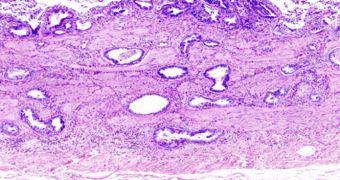A team of scientists based at the University of Houston in Texas has recently determined that the risk of a person developing gallbladder cancer is tightly linked to that individual's exposure to estrogens.
This particular variant of the disease is highly aggressive and invasive, and doctors always give a reserved prognosis when assessing patients' chances of survival.
Therefore, any breakthroughs in this field of research could have important consequences for a large number of people suffering from the condition.
As such, the new finding made at UH gains even more importance. Estrogens are steroid compounds that affect women primarily, and which are apparently responsible for triggering the development of cancer.
Experts in Houston say that their conclusions are based on a new series of experiments they conducted on unsuspecting female mice.
Details of the data appear in the latest issue of the esteemed journal Proceedings of the National Academy of Sciences (PNAS), in a paper called “Estrogen-dependent gallbladder carcinogenesis in LXRβ-/- female mice.”
“For the first time, we show in this paper that the absence of liver X beta receptors, or LXRβ, in a complex interplay with estrogens, induces gallbladder cancer exclusively in female mice,” says Dr. Jan-Ake Gustafsson.
“Interestingly, the elimination of estrogens prevents the development of tumors in this animal model,” adds the expert who is the Robert A. Welch Professor in Biology and Biochemistry Department at the university.
The work implies that one of the primary steps oncologists around the world should take when prescribing gallbladder cancer treatments is recommending a reduction in their patients' estrogen intake.
New anti-cancer drugs could in the near future make use of the new discoveries. They could provide support for other therapies, by reducing the amount of estrogens women are subjected to.
“Going forward, we need to estimate exactly the levels of LXRβ and its activators in human gallbladder cancers, particularly in female patients,” Gustafsson believes.
“Once the presence and the function of LXRβ in the human gallbladder are clear, we are going to test the potential effects of LXRβ molecules on human gallbladder cancer cells,” she concludes.

 14 DAY TRIAL //
14 DAY TRIAL //